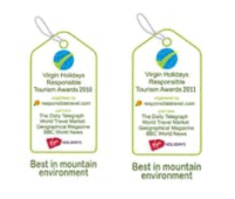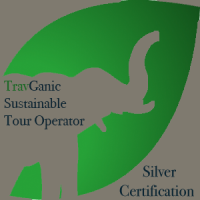Top reasons to go trekking in Nepal during the off season
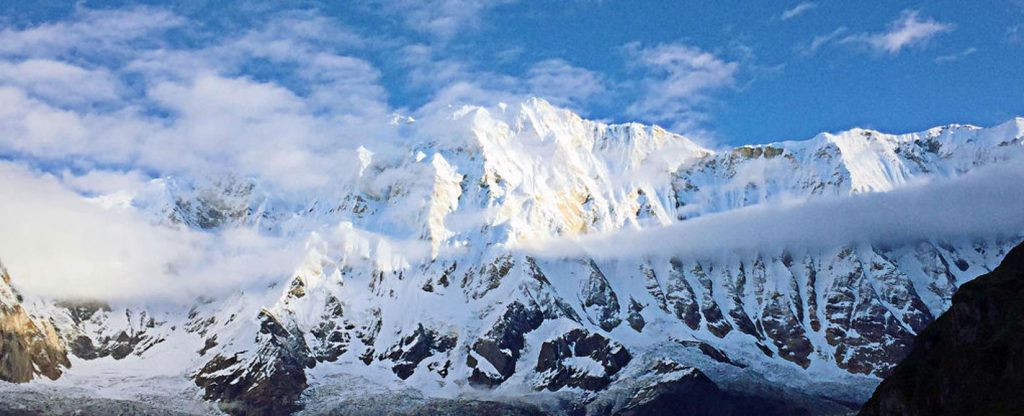
It is widely established that the Nepal Himalaya’s peak times are October–November and March, and April. However, trekking during the less busy season has its advantages. There are two recognized off-peak seasons for trekking in Nepal – the winter and the monsoon. The benefits of going on a trek during the low season. The trails won’t be busy with other trekkers, and you won’t have queues to shower at the lodge. Sometimes you could be the only trekker in the hostel. Trekking during the off-season is my favourite period. Trekking during December, January, and February. The colder winter months mean the clouds rise later to cover the beautiful mountains that Nepal is famous for. Winter is often the clearest time of year due to the colder temperatures. Sometimes the hills stay visible for days on end. Won’t it be cold, and what about snowfall? It can be crisp to cold in the mornings, depending on how high you are. However, you will warm up as soon as you start your day’s hike; you could even be sweating while walking. Have warm layers of clothing in your daypack to layer up when you stop for lunch or at the end of the day. In the evenings, the lodge owners light up the heater in the dining, which should keep you nice and toasty. We receive precipitation a few days every month except during the monsoon, when it rains more frequently. You might get snowfall in the higher altitudes, usually above 3000 meters, but it melts away in a couple of days. You might think to be at the base of the world’s highest mountains; snow could cover the trails and make it risky to trek. Remember that Nepal’s latitude is similar to Cairo and Miami, which is not too far north of the equator, making it much less cold than Europe or North America. You would still have to be careful when you come across frozen streams and might encounter icy parts on the trail early in the mornings or where the sun doesn’t shine much. Believe it or not, Nepal receives more snowfall during spring than winter. Therefore, an added benefit of winter trekking is that you will burn more calories as your body keeps you warm. Trekking in Nepal during May and June It can be pretty hot in the lower elevations of your trek, but it starts being more refreshing and pleasant as you gain altitude. If you are going to a height above 4500 meters, you will see many flowers in bloom, and it is green everywhere. You will also see beautifully colourful moths of all sizes during these months. Another benefit of this trekking during May and June will be burning calories; as it is warmer, you will sweat more, which means detoxification. Trekking will lack other trekkers and no queues to go through narrow trails or cross bridges during the end of the season’s most significant benefit. You will feel like you have the hills entirely to yourselves at times. You will walk through peaceful villages and their farmland, take your time to stop to observe the villagers go about their daily lives, and photograph them. Don’t be surprised if you are the only one at some lodges. The lodge owners won’t be as busy as during the peak season; some like to mingle with you. You could learn about their lifestyle, ask them how tourism has helped them, etc. This could be the beginning of a new friendship. If you are travelling with a small group, you can have leisurely meals, chat, and discuss other trekkers without being self-conscious. Weather Patterns The weather is the most significant concern for those planning to trek during the off-season. The weather in the mountains is unpredictable – more so these days with the effects of global warming. You can be fortunate to see glimpses of the majestic peaks even during May and June. There have been some years when severe weather has affected Lukla or Jomsom’s flights for up to a week during the best times of October and November. I led two treks in July 2017 – one to Helambu and one to Annapurna Base Camp. The Helambu trek was great because we barely saw a total of 10 other trekkers for the entire seven days we were there. We often had lodges to ourselves. The lodge owners were grateful for the income we brought to them during the off-peak season. Unfortunately, we didn’t get to see any snow-clad Peaks. It rained on us for some part of the days – mainly during the afternoons. It rained on us a few days during the monsoon trek to Annapurna Base camp. However, when we were at Machapuchare and Annapurna base camp, the clouds opened up, and we were rewarded with stunning views of the mountains. Unlike in Helambu, we were surprised by how busy the trek to Annapurna Base camp was. As mentioned before, the weather in the mountains is unpredictable. Hundreds of flowers also greeted us, and we enjoyed eating wild herbs and vegetables that only grow during the monsoon season. The scenery was lush green on both these treks. While trekking during the summer months, you will see farmers working their land or crops growing on their farmland and wake up to the song of birds in the morning. Can’t trek during the peak season? Don’t despair if you can take time off to trek during the peak season. You can avoid the crowds and have the trail, hills, and lodges to yourself. Consider visiting Nepal to do a hike during the off-season months of December, January, May, and June or even during the monsoon months of July and August. Mother Nature is always beautiful; we must find positive aspects of what lies in front of us. As the saying goes – “If life gives you lemons – make lemonade.” Happy trekking! Do I get a discount when I go trekking during the offseason? The answer is no. You don’t get discounts when you go trekking during the offseason
Helambu Family Trek during The Monsoon
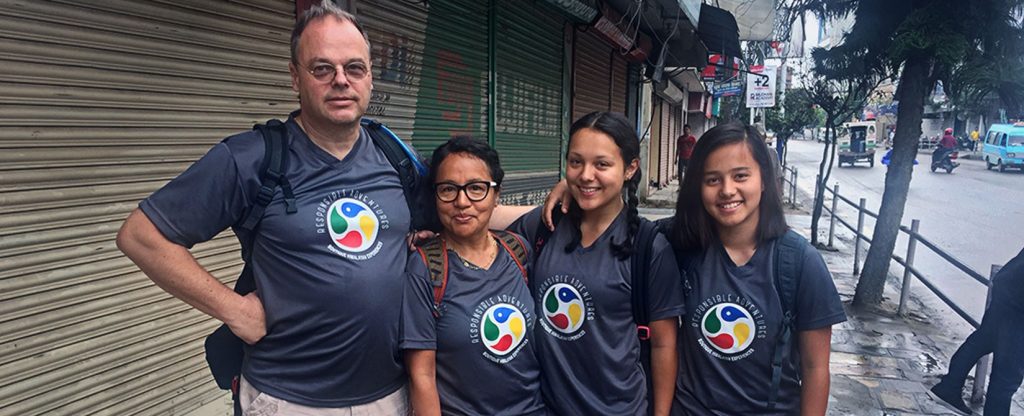
Helambu Family Trek during The Monsoon Day 1: A mutual friend introduced The Thuene Family. After exchanging numerous emails discussing whether to take on the Annapurna Circuit clockwise, the opposite of 99.9% of the people does. It would have involved going over the Thorung La pass 5416 early on the trek. The Thuenes suggested a supposedly easier and shorter trek in the Helambu region instead. We finally started the trek on the 9th of July. We picked up the family at an agreed pick-up point and drove for an hour to Sundarijal – the trek’s starting point. We met the rest of the team and were on our tour when the porters finished tying up the kit bags. We walked along a ridge through a forest of Oaks and Rhododendrons towards Chisopani. Being out of the hustle, bustle, and Kathmandu’s dusty roads was a relief. Just an hour’s drive away, we were in another world altogether. We enjoyed the tranquillity, remoteness, and green mountains. We stopped at Mulkhara at 1855 meters for lunch, where we had climbed approximately 400 meters. Pemba, our Trekking chef, was about to serve our lunch when he was stung by a bee without any provocation; Kishor, our porter, pulled out the sting from Pemba’s neck. A few minutes later, the opposite side of Pemba’s face was swollen – my first thoughts were that he had swallowed something huge, and then I realized that it was a reaction to the bee sting. I looked out for the following symptoms – i) Rapid swelling around the eyes, lips, tongue, or throat. ii) Wheezing or hoarseness. I also asked if he had the following: Difficulty in breathing. Itching, cramping, or numbness that is severe. Dizziness. A reddish rash or hives. Stomach cramps. Pemba said he felt slight discomfort on the swollen face but was fine otherwise. I asked the locals if they had seen anything like this before, to which they said they react the same way when stung by these bees. They told us the local remedy was to rub locally made hooch or a fermented drink called Chang, and the swelling would go away in 1-2 days. It was a relief to hear that. We continued our trek upwards towards our destination. I heard a villager smile on the trail and told his friend one more was stung by the bees when he saw Pemba. A few minutes later, I saw a guy with an eye swelling and bright red swollen lips, which said: “so your friend has been stung too.” I felt terrible for him and Pemba but was somewhat relieved to see the local calm and collected – it meant it was common for this to happen. Later, we concluded that the bees must have had some intoxicating nectar of wildflowers to make them attack humans without provocation during the monsoon. We continued climbing up to Borlang Bhanjhyang, 2430 meters, the highest point of the day, before descending to Chisopani. Unfortunately, it started to rain when we got to Borlang Bhanjyang. Fortunately, Chisopani wasn’t that far away. Unfortunately, the damaged and destroyed lodges by the April 2015 earthquake were left as it was. Upon asking the local lodge owner why this was so, he replied that the people running those lodges had illegally constructed and operated the lodges inside the Shivapuri – Nagarjun national park. We would have witnessed the majesty of Gaurishanker, Ganesh Himal, Manaslu, and Annapurna ranges on clear days. We woke up the next day on a windy morning. We started trekking downhill towards Pati Bhanjyang at 1830 meters. Then, we started climbing towards Chipling, 2170 meters, for lunch. We continued through sparse villages and forested areas. We witnessed many people living in temporary shelters after the earthquake two years ago. When we got close to Gul Bhanjyang, a village where only 2 or 3 rebuilt houses stood (it was thick with fog), it started raining around 3 pm, as it had done for the past two weeks. Our destination of Kutumsang was still 2 hours away. So we decided to stay at Gul Bhanjang for the night. The lodge was quickly built to temporarily cater to trekkers until they saved enough money to construct a bigger and better club. Pemba prepared “Himalayan Carbonara” as a consolation for dinner. Day 3: It had started raining/drizzling right from the very start of the day. It looked like the monsoon had kicked in. We had to go through the leech-infested forest; they would wait stealthily on bushes, rock steps, and dry leaves stacks. We had a particular leech “repellent” made of rock salts tied in a piece of cloth. The rain made the red clay, stones, and roots sleek, and the leeches added to the obstacle for that day. We aimed to have lunch at Magengoth 3390 meters, as there was nothing after leaving Kutumsang village. The first lodge site relieved us to learn that it had been damaged and abandoned; we had to go on for another 30 minutes till we arrived at the other lodge. I had a quick discussion with the team and decided to stay here for the night again, 2 hours before our planned stop. We were fortunate to have a very kind hostess who kept us warm with a fire in the dining hall, where we dried our wet clothes. Leeches had bitten all of us. I had three on my ankles, one on my left elbow and one on the left side of my neck. We were grateful that this lodge saved the day for all of us. Day 4: We woke up at our usual 6 am with a unique concoction of Ayurvedic and apple cider vinegar with a honey drink to keep us energetic and anti-inflammatory. 7.30 am, and we started trekking, hoping to get to our stopping point before 3 pm to beat the rain. We hiked through a beautiful green area, passing past several settled landslide areas. However, we were cautious
Trekking in Nepal during August
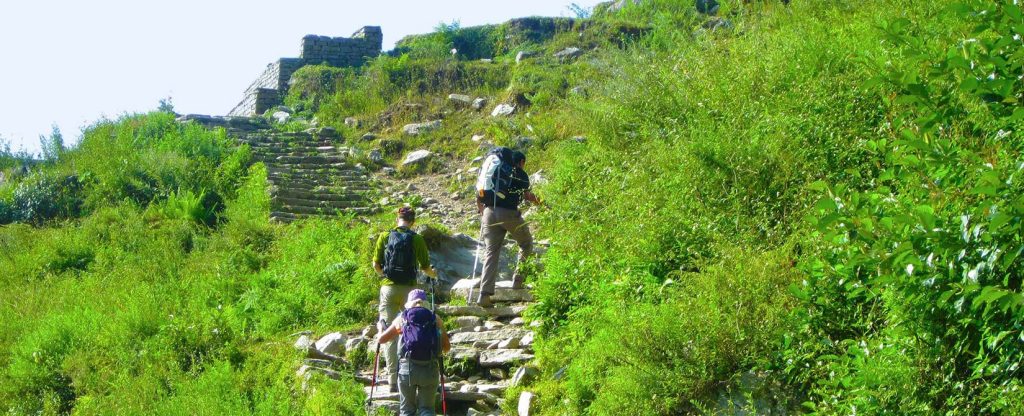
Trekking in Nepal in August The month of August is in the middle of the monsoon season. The daytime temperatures are hot and humid below 1500 meters, warm up to 2500 meters, and warm/cool above 2500 meters. You can do most treks during August, and it is advised to choose higher altitude treks for cooler temperatures. This is ideal for the Upper Dolpo Circuit, Upper Dolpo Traverse, or Upper Mustang, as these regions are in the rain shadow. It pays to invest in proper equipment such as a suitable raincoat or even an umbrella, sleeping bag, a couple of fleece layers, right thermal underwear, thick hiking socks, gloves, trekking pants, and warm hats. Here are a few essential gears to invest in. But, of course, it is always better to have more than less. It is good to dress up in layers, which you can ‘peel’ one at a time when you start to warm/heat up as you begin trekking. Benefits of Trekking in Nepal Himalaya during August. This is the monsoon season, and flowers bloom in Nepal’s middle and high hills. However, the clouds can begin to form in the early part of the day, and it can start raining at the lower altitude and snow in the higher elevations during the late afternoons. This could be a good thing to clear the clouds and clear the clouds for excellent mountain views the following day. You might even see a lot of giant colourful moths during August while trekking in Nepal. There will be fewer trekkers on the trail and in the lodges if you go trekking during August to the popular trekking areas where there are lodges. You will be warm to hot while hiking during the daytime. You could be the only trekker in the lodge. For the same reason, the wifi works better in the hostels as fewer people log in. You can use the internet better for weather forecasts and temperatures. There will be fewer people queuing for hot showers. The high-altitude flowers will be blooming at altitudes above 4500 meters. You can see villagers busy with agricultural activities. The plants, trees, and soil are fragrant with the monsoon rain. The sound of rain on the roof helps most people get a deep, sound sleep. Can I do a high-altitude trek in Nepal during August? You can undoubtedly do a high-altitude trek in Nepal during August. This is a better time to do a high-altitude trek than February or March. However, you can expect some snowfall in the higher elevations, but this should melt quickly due to the warmth and humidity. Nevertheless, we do receive some precipitation for a few days every month. Dangers/Inconveniences of trekking in Nepal during August. Trekking trails can be muddy and slippery. Be careful of wet roots while trekking through forests. Leeches can be a nuisance when it is raining or in moist areas. Landslides can be dangerous; walk briskly with utmost caution when you cross landslide areas on the trail. DO NOT stop to take photos in the middle of the landslip area. Instead, two or more of you cross the landslide area while the other person looks out for falling rocks. Leeches can be significantly irritating while trekking in Nepal during the monsoon. For prevention, you can make a small pouch of rock salt and chewing tobacco. You can dab the bag on the leeches when they get on your boots, clothes, or you. You need to dip the bag in water to moisten it more efficiently. Some people burn leeches or use Dettol or regular salt. However, the rain can wash them off, making rock salts and chewing tobacco mixture superior. Thunder and Lightning storm It is not a regular occurrence, but occasionally there might be thunder and lightning storms. In case you are caught in a rainstorm: Seek refuge in a vehicle or grounded building when lightning and thunder begin. If you are far from a vehicle or a building, stay clear from tall objects like trees, electric/telephone poles, and bodies of water. Instead, find a depression or a low spot and make yourself as small as possible – DO NOT lie down on the ground. If you are a group, spread yourselves 50-100 feet away to avoid multiple victims, as lightning can travel along the ground. If you happen to be indoors, avoid taking showers or doing laundry and avoid charging your phone or other gadgets. Stay indoors for at least 30 minutes after the last seen lightning or since the last thunder. Some lodges are shut, but you will find a comfortable place to spend the night. Not all food on the menu will be available. Start early in the morning to avoid the afternoon rains. There usually is a pattern when it starts to rain. Study it for a couple of days or speak to the lodge owners. The monsoon season has started, and it can rain while you are trekking (Normally, it starts to rain from 3 pm onwards; this isn’t a hard and fast rule). It can continue to rain for a few days occasionally. The leeches start coming out in elevations below 2400 meters if it rains. It can be hot and humid in lower elevation areas. Insects in the lower altitude areas can bite you – bring suitable insecticide. August is the monsoon’s middle; rains could disrupt domestic flights to or from Short take-off and landing strips (STOL) airports like Lukla, Jomsom, and Juphal. In addition, landslides can block roads causing delays in your holiday program. August 2021 – Normal monsoon rainfall took place. August 2020 experienced heavier rainfall compared to most recent years. Good monsoon rains for 2019 finally took place in August. The beginning of August 2018 is receiving pretty good rainfall. However, the rainfall slowed down during mid-July, and moderate-heavy rain occurred during the third and last week of August. Trekking regions that fall into the Rainshadow areas:
Trekking in Nepal during July
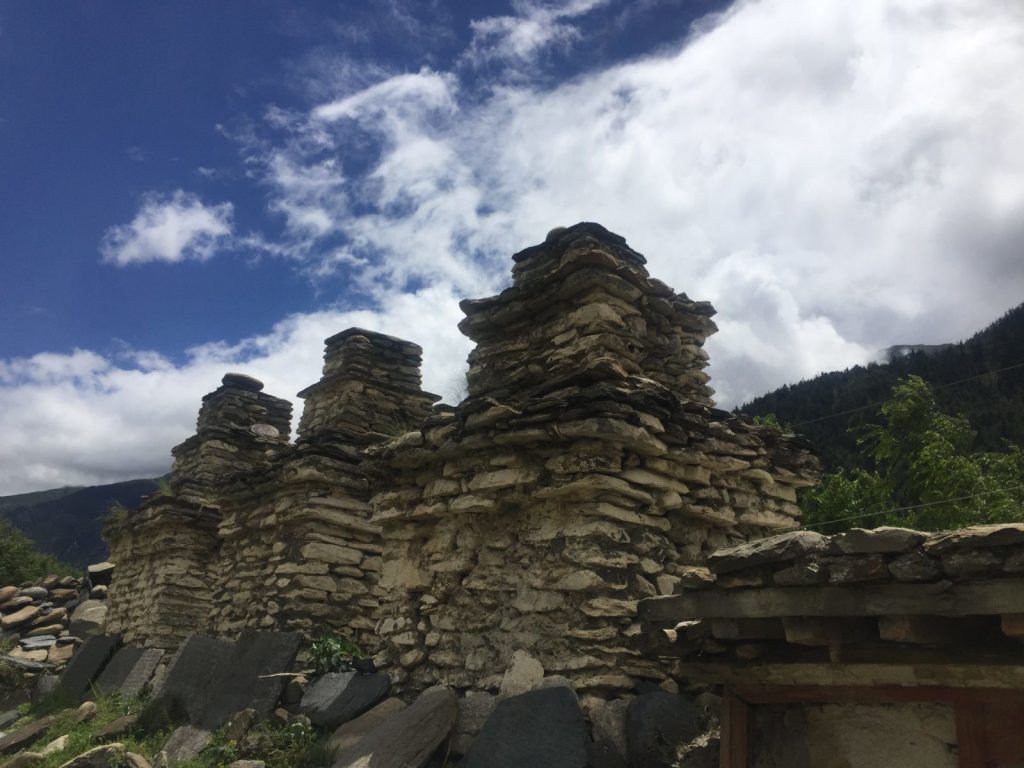
Trekking in Nepal in July In July, the monsoon season takes place. You can expect the daytime temperatures to be hot and humid below 1500 meters, warm up to 2500 meters, and warm/cool above 2500 meters. You can do most treks during July, and it is advised to choose higher altitude treks for cooler temperatures. This is an ideal time to do the Upper Dolpo Circuit, Upper Dolpo Traverse, or Upper Mustang, as these regions are in the rain shadow (you will have to book these treks with a trekking company; backpackers are not allowed into these regions). As always – it pays to invest in the right equipment such as a suitable raincoat or even an umbrella, inner liner, a couple of layers of fleece, the right thermal underwear, thick hiking socks, gloves, trekking pants, warm hats, to name a few essential gears to invest in. It is always better to have more than less. It is good to dress up in layers, which you can ‘peel’ one at a time when you start to warm/heat up as you begin trekking. Humidity makes it difficult for wet clothing to dry; bring a few sets to change into. Benefits of Trekking in Nepal Himalaya during July. This is the monsoon season, meaning many flowers and plants will bloom. However, the clouds can begin to form in the earlier part of the day, and it can start raining during the late afternoon or evening. This is a good thing as it can clear the clouds and clear the clouds for excellent mountain views the following day. In addition, there are colourful giant moths during this season. There will still be fewer trekkers on the trail and lodges if you go trekking during July to the popular trekking areas where there are lodges. You are pretty likely to be hot while hiking during the daytime. You might be the only trekker in the lodge. For the same reason, the wifi works better in the hostels as fewer people log in. You can use the Internet better for weather forecasts and temperatures. There will be fewer people queuing for hot showers. The flowers will be blooming at altitudes above 4500 meters. You can see villagers busy with agricultural activities. The plants, trees, and soil are fragrant with the monsoon rain. The sound of rain on the roof helps most people get a deep, sound sleep. Can I do a high-altitude trek in Nepal during July? You can undoubtedly do a high-altitude trek in Nepal during July. This is a better time to do a high-altitude trek than February or March. This is because we receive some monthly precipitation for a few days. We receive more snowfalls during February and March. Dangers/Inconveniences of trekking in Nepal during July. Trekking trails can be muddy and slippery. Be careful of slippery roots while trekking through forests. Leeches can be a nuisance when it is raining or in moist areas. Landslides can be dangerous; walk briskly with utmost caution when you cross landslide areas on the trail. DO NOT stop to take photos in the middle of the landslip area. Instead, two or more of you cross the landslide area while the other person looks out for falling rocks. Leeches are a nuisance while trekking in Nepal during the monsoon. For prevention, you can make a small pouch of rock salt and chewing tobacco. First, you can dab the bag on the leeches when they get on your boots, clothes, or you. Next, you need to dip the pouch in water to moisten it; it is more efficient. Some people burn leeches or use Dettol or regular salt. However, the rain can wash them off, making rock salts and chewing tobacco mixture a preferable choice. Thunder and Lightning storm It is not a regular occurrence, but occasionally there might be thunder and lightning storms. So in case, you are caught in the rain: Seek refuge in a vehicle or grounded building when lightning and thunder begin. If you are far from a car or a building, stay clear from tall objects like trees, electric/telephone poles, and bodies of water. Instead, find a depression or a low spot and make yourselves as small as possible – DO NOT lie down on the ground. If you are a group, spread yourselves 50-100 feet away to avoid multiple victims, as lightning can travel along the ground. If you happen to be indoors, avoid taking showers or doing laundry. Likewise, avoid charging your phone or other gadgets. Stay indoors for at least 30 minutes after the last seen lightning or since the last thunder. Some lodges can be closed, but you will find a place to spend the night comfortably. Not all food on the menu will be available. Start early in the morning to avoid the afternoon rains. There usually is a pattern when it starts to rain. Study it for a couple of days or speak to the lodge owners. The monsoon season has started, and it can rain while you are trekking (Normally, it starts to rain from 3 pm onwards; this isn’t a hard and fast rule). It can continue to rain for a few days occasionally. The leeches start coming out in elevations below 2400 meters if it rains. It can be hot and humid in lower elevation areas. Insects in the lower altitude areas can bite you – bring suitable insecticide. July is the middle of monsoon; rains could disrupt domestic flights to or from Short take-off and landing strip (STOL) airports like Lukla, Jomsom, Juphal, etc. In addition, landslides can block roads causing delays in your holiday program. July 2021 – The precipitation on the first few days of this month was heavy. July 2020 – The beginning was slow, but the monsoon reached momentum from the middle of the month. Incessant rain took place from the 17th to the 23rd of July, and it destroyed the form of landslides and floods. The
Trekking in Nepal during June

Trekking in Nepal in June June is part of Nepal’s short summer before the monsoon season occurs from the second to the third week of this month. You can expect the daytime temperatures to be hot below 1500 meters, warm up to 2500 meters, and warm/cool above 2500 meters. You can do most treks during June; choosing higher altitude treks for cooler temperatures is advised. This is ideal for the Upper Dolpo Circuit, Upper Dolpo Traverse, or Upper Mustang, as these regions are in the rain shadow. As always – it pays to invest in proper equipment such as a suitable down jacket (if you are trekking at a high altitude), sleeping bag, a couple of layers of fleece, right thermal underwear, thick hiking socks, gloves, trekking pants, warm hats to name a few necessary gears to invest in. It is always better to have more than less. It is good to dress up in layers, which you can ‘peel’ one at a time when you start to warm/heat up as you begin trekking. Benefits of Trekking in Nepal Himalaya during June. This is the spring season, and flowers bloom in the middle hills of Nepal. Rhododendron forests can be very colourful with white, pink, and crimson red (Nepal’s national flower) flowers in bloom, Magnolias and wild orchids, to name a few. However, the clouds can begin to form in the latter part of the day, and it can start raining at the lower altitude and snow in the higher elevations during the late afternoon or evening. This is a good thing as it can clear the clouds and clear the clouds for excellent mountain views the following day. There will still be fewer trekkers on the trail and lodges if you go trekking during February to the popular trekking areas where there are lodges. You will be warm to hot while hiking during the daytime. You could be the only trekker in the lodge. For the same reason, the wifi works better in the hostels as fewer people log in. You can use the internet better for weather forecasts and temperatures. There will be fewer people queuing for hot showers. The flowers will be blooming at altitudes above 4500 meters. Can I do a high-altitude trek in Nepal during June? You can undoubtedly do a high-altitude trek in Nepal during June. This is a better time to do a high-altitude trek than February or March. This is because we receive some monthly precipitation for a few days. We receive more massive snowfalls during February and March. Dangers/Inconveniences of trekking in Nepal during June. Most of the lodges should be open. Not all food on the menu will be available. There could be very windy conditions in the higher elevations, be prepared. The monsoon season might start while you are trekking. The leeches might start coming out below 2400 meters if it rains. It can be hot and humid in lower elevation areas. Insects in the lower altitude areas can bite you – bring suitable insecticide. June is still early, but the monsoon rains could disrupt domestic flights to or from Short take-off and landing strips (STOL) airports like Lukla, Jomsom, and Juphal. In addition, landslides can block roads causing delays in your holiday program (the 3rd week of June is an early monsoon, unlikely for landslides, but one never knows). June 2022 – There has been high rainfall even before the monsoon clouds hit Nepal. June 2021 – The monsoon took place on time, but it dumped a lot of rain from the 11th of June, causing huge floods and landslides and causing massive damage at the beginning of the monsoon season. Rainfall was 25 % heavier this year compared to the previous years. June 2020 – The first weekend of this month experienced rain in the low to middle hills and snow in higher elevations. It was caused by Cyclone Nisarga, which nearly missed Mumbai on the 3rd of June. The monsoon started on the 15th of June this year. The first three weeks of June 2019 experienced some pre-monsoon rain throughout Nepal. The monsoon was ‘late’ by about ten days and arrived on the 20th of June. The monsoon’s arrival was still weak until the end of the month. June 2018 received more rain than usual in the first two weeks, and there was very little precipitation for the second half when the monsoon should have started. Trekking regions that are in the Rainshadow areas: Upper Mustang Trek You will be visiting one of the scenic trekking trails in the monsoon season in Nepal. Once an independent Kingdom that was later annexed into Nepal’s territory, Upper Mustang is one of the restricted trekking destinations in Nepal that requires a special permit and to be booked with a tour operator. Back Packers are not allowed to trek here—the Buddhists who were once followers of the Bon religion inhabit the upper Mustang predominantly. Upper Mustang is a high-altitude desert. During the monsoon season, you will witness the rivers’ increased water levels, including the holy and mighty Kali Gandaki River. Upper Dolpo Trek This trekking destination takes you to one of the most remote regions in Nepal. The followers of the Bon religion, followed by Buddhists and Hindus, mainly inhabit it. The locals’ terrain, culture, and traditions are very close to the Tibetan way of life. The trekking trail partly lies in the Shey Phoksundo National Park, Nepal’s most extensive National Park. It is the only National Park in the trans-Himalaya region. The beauty of this region is unparalleled to other trekking destinations. Upper Dolpo doesn’t receive continuous rainfall in the rain shadow region. Trek here for the unique culture, landscape, scenery, and biodiversity. Jomsom to Muktinath Trek – email us for the itinerary. This trekking destination is more popular as a pilgrimage that is suitable during the monsoon season in Nepal. Muktinath attracts both Hindus and Buddhists alike for pilgrimage. Thus, you may embark on a spiritual or
Annapurna base camp trek during the monsoon season
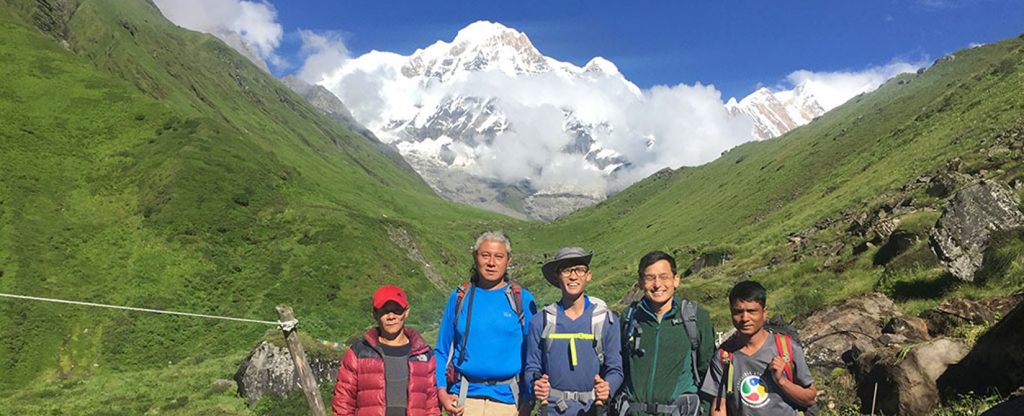
Annapurna Base Camp Trek during the monsoon season Day 1: I returned home the previous night after finishing the Helambu trek with a family. I got up after a restful sleep. My new trekkers consisting of a father and son from Singapore, arrived this afternoon, landing at 12.30 pm. I met them, walked to the domestic airport, and caught a 2.50 pm flight to Pokhara on the same day. I was getting ready to pack up while checking my Flightstats app on their flight status. It showed that their plane was to land 25 minutes before the estimated arrival time (ETA). We had agreed to meet outside the arrival terminal, and they were given my description, although I was already connected to Kevin – the dad, on Facebook and WhatsApp. The father and son trekkers – Kevin and David Kho. When they came out of the arrival terminal, I waved at them, and they walked toward me. We had a quick handshake, they were welcomed to Nepal, and we walked over to the domestic terminal, which is less than a 10-minute walk from the International Terminal. After going through the security check for a light meal, we went to the restaurant. Then, we boarded the flight on time for a short 25-minute flight to Pokhara. We saw some Himalayan Summits peeking out of the monsoon clouds on the flight. Upon landing in Pokhara, we boarded our pre-booked van to our hotel and agreed to meet up to go for a walk along the Lakeside shops to purchase what they needed for the trek. We were lucky to see Mount Machapuchare (Fishtail) 6993 m with fresh monsoon snow. It had more snow now than the rest of the year. We had an early dinner of tandoori chicken, fish, and naan before retiring for the night. Day 2: We woke up early for our 6.30 am breakfast. We had a two-and-a-half-hour drive to our starting point, followed by a 3-4 hour uphill trek to our next destination, Chomrong. We stopped and picked up our support crew after an hour of driving and continued. Fifteen minutes before we reached our stop, we had to change into another jeep on the other side of a small landslide, which had taken place the previous night. We were informed that falling rocks had injured a local trekker on the Westside of the Modi River’s regular trail. The rockfall was caused by an excavator constructing a new road. We had to walk on the newly made path east of the Modi River. I briefed the Singaporean trekkers on being careful on the wet stone, slippery roots, and trail and avoiding moist areas to avoid leeches. In advance, we stopped at New Bridge for lunch ordered by Ram, our porter. We had another two and a half hours of the uphill trek until we reached Chomrong village, our destination for the day. We were making good time on the hike when it started to rain 35 minutes before Jhinu Danda. We decided to stop here – an hour before our target destination to avoid walking in the rain, and we didn’t want to exert the trekkers on the first day as they had a very early start. We had time to enjoy some hot beverages and hang our wet clothes to dry at the lodge. Kevin and David’s trekkers talked about Nepal, its topography, and ethnology before dinner. They retired early to get ready for a long trek the following day. Day 3: We got up early with our Ayurvedic energy-boosting drink as usual and started the day before at 7.30 am to get into camp before 3.30 pm to beat the rain. We had a steep 300 meters of climbing to Chomrong village. They made a good time getting to Chomrong, and we discussed pushing on to Bamboo, which was a further 4 hours away for lunch, so we had only an hour to our final stop at Doban. This was a physically demanding day as, after the 300-meter climb, we had to descend on steps down to Chomrong river and a 75-minute ascend to Sinuwa at 2340 m. I asked the trekkers if they were hungry or needed to get some snacks, as there was nothing once we left this place until we reached Bamboo for lunch. The area from now on until Annapurna Base camp and back is called the particular management area. No bottled water is allowed for environmental reasons, and fresh or dried meat for religious beliefs. During the “off-season,” the lodge owners take annual turns to man each stop: One lodge will serve food; however, if there is a need for more rooms, the other lodge owners leave the room keys operating lodge owner so trekkers can sleep in their lodges. We trekked through a lush area of Oak, Rhododendrons, and Bamboo forest with numerous waterfalls. The last time I hiked in this area was during the Christmas period of 2014. Then, I noticed that the lodge owners had widened the trails, laid slates, and made steps to conserve the path, and the difficult rocky trail had been flattened. We reached Bamboo at 1 pm and were served our order of mixed fried noodles within a few minutes as Ram, our porter, had gone ahead of us to order our lunch. It takes 60-90 minutes for meals to get ready, as it is freshly prepared. Kevin loved the fried noodles and said that these particular noodles would do very well in Singapore (he was in the food business for six years, so I guess he knows what he is talking about). The cook of the lodge was delighted when I told him this. Feeling energetic after a sumptuous meal, we continued to Doban 2600 m, our daily stop. We were glad to have covered an extra hour of walking with no problems for anyone. Upon getting there, we learned that two other trekkers were going towards Basecamp, and a big group of 19 trekkers
Custom-made Hindu pilgrimage tour of lower Mustang during the monsoon
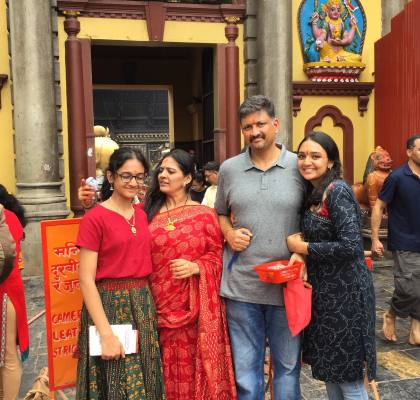
The custom-made Hindu pilgrimage tour of the lower Mustang during the monsoon A friend recommended his colleague to contact me for their tailor-made holiday, a pilgrimage to Nepal’s Kathmandu, Muktinath, and a lower Mustang trip. We communicated over email and had a few WhatsApp conversations, discussing the fine details of the type of experience the family of 4 was expecting. I learned they were a pious Hindu family from South India but are currently based in Kuala Lumpur, Malaysia. I met them on the 24th of July at Tribhuvan International airport. They were brought over to their Boutique Hotel in the tourist district of Thamel. We went for lunch after checking into the Hotel. After that, they were taken on a walking tour of the Ason Spice market and the Kathmandu Durbar Square. The sights, sounds, and smells of Kathmandu city astonished the family members. In addition, the family was taken aback by the ancient architecture of Basantapur Durbar square, a World Heritage site. We parted ways in the evening as we had a full day of sightseeing the next day. Fullday of Temple visits and a World Heritage site. We started early, at 8 am, for our full day of pilgrimage/sightseeing. We went to Budhanilkantha on the northern outskirts of Kathmandu first. There is an ancient statue of reclining Vishnu at this religious site. It was buzzing with activities of pilgrims, both local and from India. Next, we went to the Guheshwori temple dedicated to Goddess Suttee, where the family spent prayer and offering. The last Hindu temple of the day was Pashupatinath – the most significant of all temples dedicated to Lord Shiva. We were fortunate to go around the time when all four doors facing the North, South, East, and West were open to see the “Shivaling”; the family was fortunate to receive 3 Rudraksha necklaces from the priest in the temple’s inner sanctum. The final part of the sightseeing was Bhaktapur, another one of Kathmandu’s World Heritage sites. Upon reaching Bhaktapur, we went to a restaurant for lunch first. The visitors were fascinated by Bhaktapur’s ancient architecture, world carving, and stone-paved alleyways. We spent a long time there, and by the time we reached the Hotel, we had spent 12 hours on tour; usually, a full-day tour takes 6-7 hours. Again, it shows how absorbed they were with the temples and the World heritage site. Flight to Pokhara It was the third day, and we were flying to Pokhara after breakfast. The flight was only delayed by fifteen minutes. Despite the flight route being cloudy, it was a smooth flight despite the monsoon season. We collected our baggage, got to our vehicle, and went to our Hotel. We went for a walk after checking into the Hotel and had lunch at the Lakeside. The family got their first taste of Thakali Dal bhat. The Thakali are an ethnic group living by the Kali Gandaki river (Thak Khola) valley. Their womenfolk are renowned innkeepers and are known to make the most delicious Nepali staple of Dal-bhat, consisting of rice, lentil soup, vegetable curry, chicken, or goat curry accompanied by some sour/spicy pickles. They loved their first taste of the Nepali Thali (set) meal. Shankar, Priya, and their two daughters, Shruthi and Smrithi, were quite energetic and wanted to do more than chill out by the Lakeside in Pokhara. So, I arranged for a van to take us to see a few sights in Pokhara. We started by visiting the Bindabasini temple and witnessed the Seti river gorge and Davie’s fall. The Davies waterfall was impressive as the volume of water was tremendous due to the monsoon season. Finally, we went down to Gupteshwor Mahadev cave, which was cooling with the breeze caused by the pouring of Davie’s fall on the opposite side. We returned to the Lakeside and parted ways after planning to meet at the restaurant at 6.30 am for breakfast as we had an early flight to Jomsom. Jomsom, Lower Mustang and Muktinath tour We met as planned for breakfast, loaded our jeep with our luggage, and left for the airport. However, the jeep was requested to wait at the parking lot until our flight took off. I had to do this as they were on a tight schedule, and all the flights were fully booked. The alternate plan was to drive up to Jomsom if the flight got cancelled, as the monsoon rains along the flight route could cause poor visibility resulting in flight cancellations. Fortunately, the flight was only delayed by an hour, and we landed in Jomsom after another smooth flight. We checked into our deluxe Hotel Om’s Home, which has been around since 1976. Bollywood superstars Amitabh Bachan and Danny Denzongpa, along with the film crew of a Bollywood movie, stayed during the shooting of “Khuda Gawah” in 1992. Jomsom is the Mustang district headquarters, also known as a cold desert and windy valley. The wind starts to blow from 10 am onwards and continues until evening. The plan was to spend the next three days going on jeep rides combined with some hiking to get acclimatized to altitude before going to Muktinath for their pilgrimage; as they come from sea level and tropical weather, we were preventing high altitude sickness and getting appropriately acclimatized. We went for a long walk that involved getting to the Kali Gandaki river bank, walking over to old Jomsom, and having lunch. Then, we walked back to our Hotel for high tea and left towards Shyang village in the afternoon. In the evening, we returned to the Hotel in time to order dinner and go for our shower before dinner. We were pleasantly surprised when we came out for dinner by some live music at the Himalayan Java café at the Hotel. Shruthi jumped in to sing a couple of numbers with the Barista, who also doubled as a musician in the evenings when they had some customers. It was a fun day, and
Trekking in Nepal during Monsoon
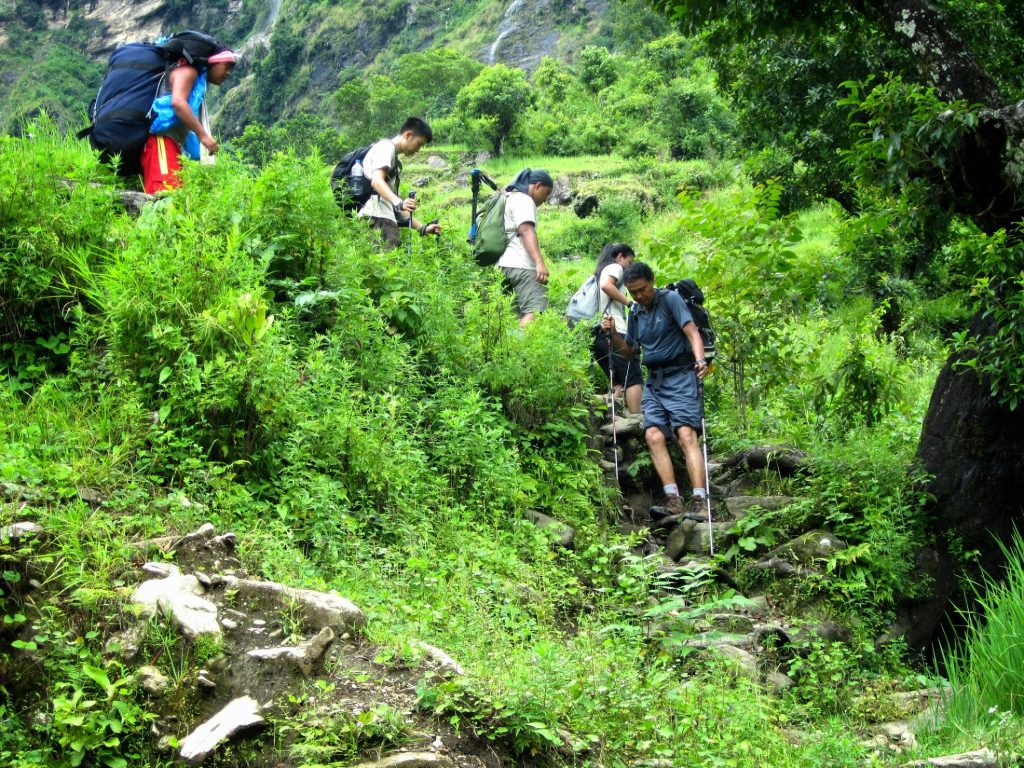
What is Monsoon trekking in Nepal like? The monsoon begins around mid-June; it peaks during July-August and winds down in early September. As a result, the temperature increases, as do the humidity and rain. Although clouds often cover the mountains, temperatures can get uncomfortable in the lower elevations and showers almost daily. You may even find yourself acquainted with leeches in the lower areas, but fear not – leeches don’t climb as high as we do! So, where should you trek in the monsoon? We say, go to the northern side of the Himalayas, known as the rainshadow. What to expect during the monsoon When trekking in the lower altitude forests, you can expect a dense build-up of fog and clouds. However, the clouds occasionally clear up to reveal the stunning mountains and valleys. This happens especially after a night of heavy rain. You can expect anywhere from 4-6 hours of rain varying in intensity; occasionally, it can rain continuously for 2-3 days. Trekking tips for monsoon treks It is better to start your day early; generally, it starts raining in the afternoons. However, there tends to be a pattern in the weather; ask your guide or local lodge owners how it has been for the past week or ten days. Although the trend is not guaranteed, you have something to go by to make plans accordingly. Recommended gear for the monsoon It is best to have an umbrella in the lower elevations – if you don’t use trekking poles – because it will be sweltering even with the best quality raingear. I prefer to trek in the rain without rain gear; I feel it is better to get wet from the rainwater than my sweat. Also, the humidity and temperatures drop as you gain altitude, making it more pleasant. However, it can still rain, and it is advisable to put on rain gear at higher elevations. Sometimes the humidity is so high that even quick-dry clothing won’t dry overnight! Transportation during the monsoon Getting to the trailhead can be the primary challenge during this season, as flights can be delayed by poor visibility, and roads can be muddy or even blocked by landslides. It is always better to have a couple of extra days to factor in delays and give yourself a safe buffer. If you plan to fly in or out of your start/endpoint, find out if there is an alternative road route close by and ask if the road is open. Advantages of Monsoon Trekking You might see a few other trekkers on the trail. You could be just the only person/s staying at the lodge. You will get lush vegetation, and the farmland is busy with livestock and farmers. You get to smell the fragrances of plants, trees, and soil. In the higher elevations, you will see beautiful giant moths. You might get to eat freshly harvested wild vegetables, herbs, and mushrooms at the lodges you stay in. Plus, the sound of the rain helps you fall asleep quickly and slumber deeply. Given it’s the ‘off-season,’ your inn-keepers, guides, and porters will also appreciate your business much more. But unfortunately, the off-season is a hard time for those active tourism. Hazards that come with trekking during the monsoon: Trekking trails can be muddy and slippery. Be careful of slippery roots when trekking through forests. Landslides can be a hazard; walk briskly with utmost caution when you cross landslide areas on the trail. DO NOT stop to take photos in the middle of the landslip area if two or more of you take turns crossing the landslide area while the other person looks out for falling rocks. Leeches can be an annoyance while trekking in Nepal during the monsoon. Take a small pouch of rock salt and chewing tobacco mixture; dab it on the leeches when they get on your boots, clothes, or you. You must dip the pouch in water to moisten it for better effect. Some people burn leeches or use Dettol or regular salt. However, the rain can wash them off, making rock salts and chewing tobacco mixture a preferable choice. Thunder and Lightning storm It is not regular, but occasionally there might be thunder and lightning or storms. Seek refuge in a vehicle or grounded building when lightning and thunder begin. In case you are caught in a storm: If you are far from a vehicle or a building, stay clear from tall objects like trees, electric/telephone poles, and bodies of water. Instead, find a depression or a low spot and make yourself as small as possible – DO NOT lie down on the ground. If you are a group, spread yourselves 50-100 feet away to avoid multiple victims, as lightning can travel along the ground. If you are indoors, avoid taking showers or laundry and charging your phone or other gadgets. Stay indoors for at least 30 minutes after the last seen lightning or since the last thunder. As mentioned before, landslides could block the roads, or flights can get cancelled due to bad weather. Monsoon 2020 We experienced almost double the rainfall in June and July. This caused landslides and floods in Nepal, bringing death and destruction. Trekking regions that fall into the Rainshadow areas are listed below:


